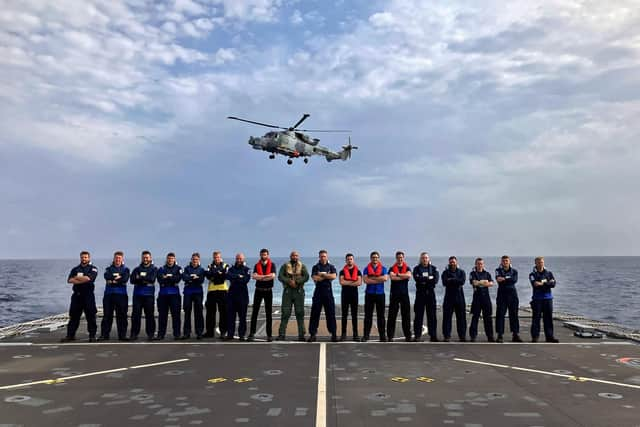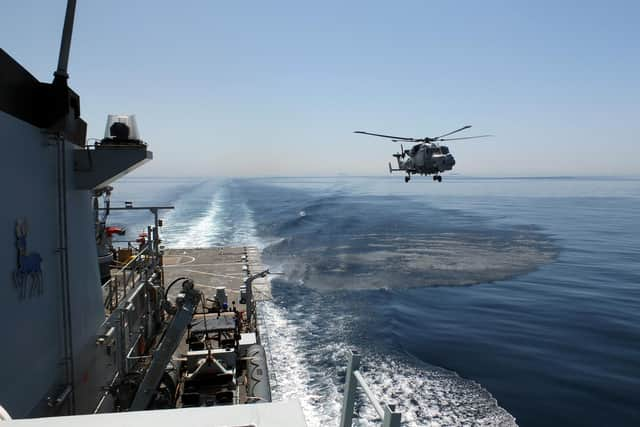Royal Navy warship HMS Trent pushes helicopter operations to the limit in the Mediterranean
and live on Freeview channel 276
Portsmouth-based patrol ship HMS Trent has been working with a Wildcat helicopter as the aircraft was tested in different weather and sea conditions – at day and at night.
Trent, one of five second-generation River-class patrol vessels deployed from Mexico to Singapore, is assigned to the Mediterranean and West Africa.
Advertisement
Hide AdAdvertisement
Hide Ad

The helicopter trials were the most extensive to have taken place on a River-class vessel and saw a specially-modified Wildcat being dispatched with an elite team of pilots and scientists from defence firm, QinetiQ.
The trials involved four test pilots, two QinetiQ flight test engineers, two test engineers, two QinetiQ flight physicists, an analyst and more than 20 engineers and technicians to maintain the hi-tech aircraft.
In all, the helicopter landed – and took off from – Trent’s flight deck more than 200 times in as many different conditions, day and night.
A series of sensors on the Wildcat and on Trent’s superstructure recorded crucial details – many of them not normally available to the air or ship’s crew – with a good two terabytes of data – enough space for more than a quarter of a million songs on an MP3 player.
Advertisement
Hide AdAdvertisement
Hide Ad

The tests were a thrilling mission for Trent's crew, who had the opportunity to get used to guiding the Wildcat safely on and off the deck, refuelling it, communicating with the crew, loading and unloading kit.
‘As my first time on board a warship, I have really enjoyed it,’ said Air Engineering Technician Conor Sinclair from 1700 Naval Air Squadron, which provides units and ships around the Navy with extra personnel for specific missions.
‘It’s a completely different experience and way of operating from normal squadron life. It has been really full, but I’ve made sure I’ve been topping up the tan when I can.’
Engineering Technician Kieran Mcternan acted as the ‘badger’: fuelling and supporting the aircraft whilst it is on the flight deck, which also means responding to an emergency.
Advertisement
Hide AdAdvertisement
Hide Ad‘This has been a whole new learning experience for me, which is always exciting after 4 years in the Royal Navy,” he said. “I have really enjoyed the challenge and the responsibility that has come with the flying trials.’
Comment Guidelines
National World encourages reader discussion on our stories. User feedback, insights and back-and-forth exchanges add a rich layer of context to reporting. Please review our Community Guidelines before commenting.
